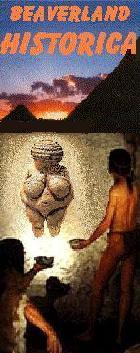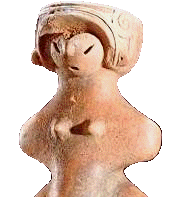| |||||||||||

 |
The head and tail of Japan were switched in the modern times
by Akira Kato
July 12, 2003
In ancient times, Japan absorbed culture from China through the Korean Peninsula. When you take a look at the above map, you can easily understand that the main entrance or front entrance was Kyushu because, when you trace the route from Beijing to Japan, the nearest or front entrance indeed turnes out Kyushu. The region we call “rear Japan“ at prsent actually faces the continent—the main source of culture in ancient times. Culturally speaking, therefore, the present-day rear Japan used to be the front Japan. A long time ago, Japan attached itself to the continent, and the Sea of Japan used to be a giant lake. Please look at the above map. When you wanted to come to Japan in those days, Kyushu and Hokkaido were the nearest entry point to enter Japan from the continent. This means that, because it was far from those entry points, the remotest area was Tokyo. So, why and when did people start to call the Pacific-Ocean side “front Japan”? Although I haven’t verified against the historical documents, the following facts might have something to do with this naming:
Nobody could tell for sure exactly when the Japanese started to call the Pacific-Ocean side “front Japan”. At present, however, the majority of the Japanese call the Pacific-Ocean side front Japan. It is not important to decide whether this naming is right or wrong, but when you take the ancient Japanese history into consideration, this naming takes an important meaning. At present, many big cities gather on the Pacific-Ocean side. In ancient times, however, only small villages lined along the Pacific coast. Conversely, many big communities were located on the Japan-Sea coast. Specifically, in the present-day Shimane and Tottori prefectures, extremely large communities exisited as a kingdom. The recent archaeological findings support the above statement. For example, the bronze vessels discovered at the Kaminiwa Koujindani ruins of Hikawa-machi in Shimane prefecture as well as 39 copper handbells found at its next-door town (the Kamo Iwakura ruins in Kamo-machi) turned out the sufficient evidence that verifies the existence of the ancient Izumo kingdom. Furthermore, many legends such as “white rabbits at Inaba” and a varierty of myths described in Kojiki originated in this region on the Japan-Sea coast. This means that, in ancient days, the Japan-Sea side remained the center of culture and politics. At present, many people consider Tokyo to be the center of culture, economy and politics. But in ancent times, the dominant people of Yamatai-koku and the Yamato Dynasty must have regarded the Japan-Sea side and Shimane Prefecture, in particular, as the most important region or the front Japan at the time, because the powerful ancient kingdoms such as Izumo thrived on this region. Are you sure about that?Emperor Keitai did not come from the main line of the royal family. His predecessor, Emperor Buretsu, did not leave any legitimate child to succeed him. Therefore, it is said that the a man called Ohoto, who came from present-day Fukui prefecture, was invited to take over the throne. Kanamura Otomo, one of the powerful court officials, supported this man, supposedly a sixth-generation descendant from Emperor Oujin. King Ohoto controlled the kingdom of Koshi. Many scholars, however, belive that a big strife took place over the succession, for it took nearly 20 years for him to settle down in Yamato, after wandering in Kawachi and Yamashiro. If you take the above circumstances into consideration, you probably come to conclusion that the succession didn’t go through smoothly. On the contrary, when you take an assumption that Emperor Keitai had nothing to do with the previous Yamato Dynasty, everything seems to explain itself. If you want to know more about this succession controversy, please visit this page (Is the Japanese imperial genealogy unbroken?—Mysteries of Emperor Keitai). Compared with the ancient Izumo kingdom, Koshi Kingdom is not well-known in the Japanese history. Because its king, Ohoto, was chosen as emperor, you cannot neglect this kingdom. It must have been a powerful realm on the Japan-Sea side just like Izumo Kingdom. King Ohoto might have invaded the Yamato dynasty as he saw this succession crisis as a heaven-sent opportunity. The situation resembled the later civil-war period, during which a number of war lords struggled with one another to establish the seat of government for the unified Japan. Such war lords include Uesugi Kensin, Shingen Takeda, and Nobunaga Oda among others. Nobody could tell whether King Ohoto succeeded in conquering the Yamato Dynasty or he reached the agreement to take over the throne with powerful clan heads in Yamato. In any case, King Ohoto seems to have faced the strong resistence from the Dynasty and it took 20 years for King Ohoto to settle in Yamato. If you accept the notion that the Japan-Sea side was also “rear Japan” in the ancient times, you can hardly understand why a tribal leader like King Ohoto could rise to take over the throne from such a remote village on the “rear Japan”. With the above question in mind, please take a look at the map below.
When you open a history book, you can easily see that the situation of the continent at the time remained quite hectic. The people could hardly maintain peaceful time and were always troubled with disturbances of war. Do you remember that, after the Vietnam war, the refugees called the “boat people” sailed to Japan to avoid further disturbance and harassment? Even in the present peaceful time, such an incident took place. Think about the ancient war-torn continent. These Chinese and Korean people at that time seems to have found no place to take refuge execpt for setting sail to Japan. A large number of refugees, therefore, must have embarked on the Japan-Sea coast. Once they set sail, however, most people—except for the professional sailors who could use navigational skills—relied on the Japan current. As shown in the above map, therefore, the people from Silla drifted along the current and embarked on the shore of Shimane, Tottori and Fukui prefectures. The people who sailed from Kokuryo reached the shores of Niigata and Akita prefectures. Unlike the Vietnamese “boat people” in the recent past, those continental refugees at the time possessed the advanced culture, iron weapons and new knowledge on strategy. And the earlier refugees must have lived in those region on the Japan-Sea coasts and welcomed the newcomers because of their new weapons and knowledge. Such being the case, the people on the Japan-Sea coast became stronger militarily, and got enlightened with new knowledge more than other people on the rest of Japan. Naturally, the Yamato Imperial Court became aware of this and took an extra caution so that they could prevent from being invaded by those “rear Japan” people. When Emperor Buretsu died without leaving any legitimate heir, the situation was just like that described above. As said earlier, if you accept the currently widespread notion of the fron-rear Japan, it sounds quite odd that a provincial man like King Ohoto took over the throne. When you take the above situation into consideration, however, it seems quite natural that King Ohoto from present-day Fukui Prefecture conquered the Yamato Dynasty and ascended the throne, because—after all—the current “rear Japan” was culturally and militarily “front Japan” at the time.
| ||||||||||
| |||||||||||





















